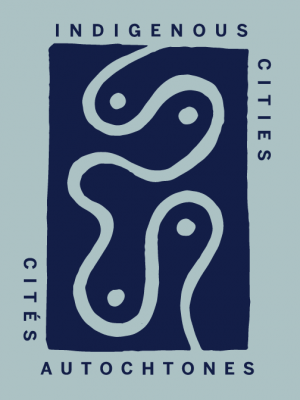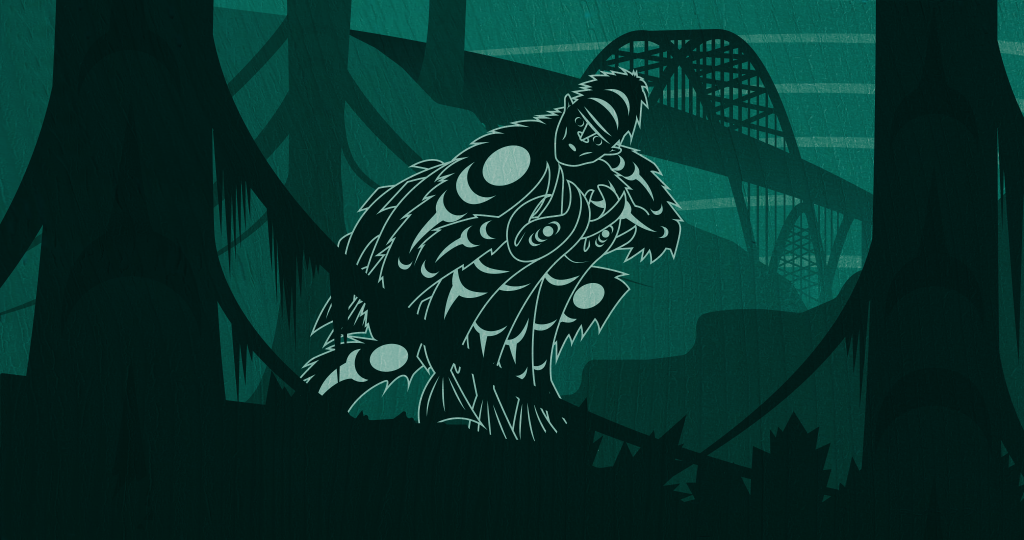
Altering the Landscape of Our Memories: A Review of Indigenous Cities (Vancouver)
Review By Nicole Jung
August 4, 2021
BC Studies no. 211 Autumn 2021 | p. 130-133
I came to x̌ʷay̓x̌ʷəy̓ as a child, not knowing her name, but knowing she had the strength to hold out sharp city noises and the tenderness to hold onto the shy wood duck. To me, a timid child wildly in love with animals, x̌ʷay̓x̌ʷəy̓ radiated every sense of home.
It wasn’t until later in life that I learned x̌ʷay̓x̌ʷəy̓ (also known as Stanley Park) had indeed been home to many generations of Indigenous families. And yet the city of Vancouver, provincial and federal governments took extensive actions to forcibly remove them from this home, their houses burned to “erase any indication of their longtime presence” [1].
Now, when I stand in this ‘park’ I wonder where those houses stood, where the children played. In which direction did the canoes pull people, hearts and memories away from the soil in which they were rooted? How close did the fire feel to the spirits, let alone to the eyes, the flesh of those who witnessed that day?
It is not a coincidence that, today, Stanley Park is abuzz with many otherwise noises while I whisper these questions to myself. As people who live in a settler colonial nation, we are immersed in spaces where both the physical erasure of Indigenous presence and the narrative erasure of Indigenous (hi)stories (like that of x̌ʷay̓x̌ʷəy̓) work to transform Indigenous homelands into colonially usurped places.
And yet, as Billy Ray Belcourt (Driftpile Cree) asserts, “What happened isn’t nowhere; it wasn’t disappeared” [2].

Cultivating a generous artistic space for decolonial resistance, Indigenous Cities: The Stories Here enlivens Belcourt’s assertion through a collection of ‘place-based podcasts,’ asynchronous storytelling grounded in Indigenous territories, co-presented by the NAC Indigenous Theatre, Savage Society, and Gordon Tootoosis Nikaniwin Theatre. Those who enter the Indigenous Cities website enter a digital space visually and aurally encoded with guidance for interacting with this work. Acknowledging first the place-based specificities of the cities currently featured (i.e., Vancouver, Saskatoon, and Ottawa), each city’s webpage is adorned with a unique piece of visual art. Created for the Vancouver feature, Sasqets at sx̌ʷéyəməł (pictured) specifically orients witnesses to a realm of “wondrous things,” where that which is familiar and foreign are confounded [4]. A city edge that beckons to New Westminster’s sasquatches betwixt trees and half-light disrupts any pre-formulated certainty that you knew this city, and so beckons to you too. Prior to accessing any of the project’s podcasts, we are guided to hold loosely our current understandings of Vancouver and asked to approach with our hands and hearts held in postures of openness.
The reciprocal flow between a posture of openness and the welcoming voices of generous storytellers allows Indigenous Cities to (re)negotiate our sense of place. To listen to the podcasts themselves, I am instructed to first travel into the spaces where these stories originate, the website giving me directions to these localities as well as access to the podcasts in mp3, script, and video formats. Alternatively, I can interact with a digital figure on the project’s website, moving her into luminous blue rings spread across a map of Vancouver. I am, for the first time, living away from the city I grew up in. So, this latter option is my only one, and I come to think my engagement with Indigenous Cities will be limited. Yet, as I begin receiving these stories, I find that my mind’s eye can wander Vancouver’s streets and walkways, sensing without actually seeing the ground where I anticipate Bog Laurel to bud, the pavement that still yields to delicate Dandelions. Through these imaginings, I also begin to revel in the distinction between ‘space’ and ‘place.’ In particular, place describes the layered meanings we ascribe to space. Thus, place is an embodied knowledge that we carry with(in) us, a message about the land that is connected, yet not tethered, to it.
As I surface from my own imaginings, my ears become attuned to Quelemia and Chrystal Sparrow’s laughter in “Məθkʷəy̓,” and I become immersed in their embodied articulations of place [7]. Laughter here is a profound act of “presencing,” a “reminder that Indigenous peoples carry the knowledge of our ancestors, homelands, language and other realities with us in our bodies” [6]. So, although colonial forces have worked to displace Indigenous bodies from cities, I am reminded that Vancouver has not ceased to be Indigenous homeland. Embodied knowledges – like those about Indigenous homelands – are inherently mobile, carried with those who hold them across nations and space. The mobility of these knowledges becomes further emphasized when I again remember that I am listening to the Sparrow cousins through flimsy wire earphones; The digital medium of Indigenous Cities exists as an example of “web topology” that is “removed from the physical environment yet deeply ingrained with messages about homelands and sovereignty movements” [3]. With these revelations, the expansive decolonial implications of these fluid homeland knowledges also come into focus: They persist despite colonial dispossession and will exist as long as Indigenous peoples do. So, I come to imagine that laughter also materializes Leanne Betasamosake Simpson’s (Michi Saagiig Nishnaabeg) understanding of resurgence into the city atmosphere, “celebrat[ing] that after everything, we are still here” [9].
I remove my earphones to feel a sudden yet altered silence. I am again on the land, understanding her differently now. My spirit asks, “What is the responsibility of those who hear these messages about city homelands?”
I am drawn to think about how these messages must transform our interactions with this city. As Robin Kimmerer reflects, “When we call a place by name it is transformed from wilderness to homeland” [5]. So also I wonder, by the same practice, can we transform a cityscape into decolonized land? Listen to “skwtsa7s (Deadman’s Island),” and learn to call the land skwtsa7s. Then her fire flowers are no longer red, but the colour of sea water stained with blood [10]. We may not be tearing down skyscrapers or altering the physical landscape of Vancouver in any way, but by engaging Indigenous place names I believe that we can “[alter] the landscape in [our] memory” and so work to envision decolonial realities for this city [9].
In answering the question of my spirit, I also come to a final thought about the practice of witnessing. Algonquin Anishinaabe scholar Lindsey Lachance speaks to this practice by contextualizing it in both the intentions of Indigenous storytelling and oral cultures. For Lachance, witnesses are dually meant to be “[grounded] in who and where they are” by receiving the stories they hear, and to actively maintain these knowledges about identity and place by carrying them forward into community [6]. Here, the words spoken in “The Promise (1864)” echo inside me, where I hope they leave an enduring signature on my ways of being in this world: “You are asked to witness the work that this time and space has in its intention. Please put these words on your heart and mind” [8].
I imagine a day when you and I stand in this city, together creating places abuzz with resurgent and decolonial stories.
References
[1] Barman, Jean. 2007. “Erasing Indigenous Indigeneity in Vancouver.” BC Studies, no. 155 (Autumn 2007): 3-30.
[2] Belcourt, Billy-Ray. NDN Coping Mechanisms: Notes from the Field. Toronto: Anansi, 2019.
[3] Duarte, Marisa Elena. “Decolonizing the Technological” In Network Sovereignty: Building the Internet Across Indian Country. First ed. Seattle: University of Washington, 2017.
[4] Justice, Daniel Heath. Why Indigenous Literatures Matter. Waterloo: Wilfrid Laurier University Press, 2018.
[5] Kimmerer, Robin Wall. Braiding Sweetgrass. First ed. Minneapolis, Minnesota: Milkweed Editions, 2013.
[6] Lachance, Lindsay. “The Embodied Politics of Relational Indigenous Dramaturgies.” PhD diss., University of British Columbia, 2018.
[7] “Məθkʷəy̓,” Indigenous Cities, accessed 14 July 2021, https://nac-cna.ca/en/indigenouscities/city/vancouver/story/meokwey-Quelemia-Sparrow.
[8] “The Promise (1864),” Indigenous Cities, accessed 14 July 2021, https://nac-cna.ca/en/indigenouscities/city/vancouver/story/the-promise-1864.
[9] Simpson, Leanne Betasamosake. Dancing on our Turtle’s Back: Stories of Nishnaabeg Re-Creation, Resurgence and a New Emergence. Winnipeg: Arbeiter Ring Pub, 2011.
[10] “skwtsa7s (Deadman’s Island),” Indigenous Cities, accessed 14 July 2021, https://nac-cna.ca/en/indigenouscities/city/vancouver/story/skwtsa7s-deadmans-island.
Publication Information
Indigenous Cities: The Stories Here, 2021
https://nac-cna.ca/en/indigenouscities/city/vancouver
